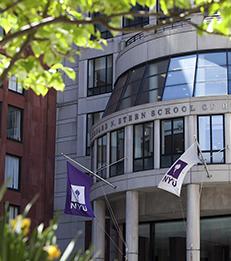New Research From NYU Indicates Telemedicine May Be Less Efficient Than In-Person-Based Care

Researchers at NYU Stern School of Business, NYU Grossman School of Medicine and NYU Tandon School of Engineering find that physicians who devoted a higher proportion of their clinical time to telemedicine engaged in higher levels of after-hours work than those who used telemedicine less intensively.
As the COVID-19 pandemic gripped the U.S. in the early months of 2020, many essential services, including medical care, rapidly pivoted to an online format. More than two years later, the shift to online care has been lauded as the future of medicine, however new research from NYU Stern School of Business, NYU Grossman School of Medicine and NYU Tandon School of Engineering challenges the efficiency of telemedicine and explores whether the practice adds additional work for healthcare providers.
In a new paper entitled, “The Impact of Telemedicine on Physicians’ After-Hours Electronic Health Record ‘Work Outside Work’ During the COVID-19 Pandemic: Retrospective Cohort Study,” NYU Stern Professor Batia Wiesenfeld, NYU Grossman Professors Katharine Lawrence, Devin Mann, Eduardo Iturrate, NYU Tandon Professor Oded Nov, and NYU Langone Center for Healthful Behavior Change Postdoctoral Researcher Soumik Mandal analyzed data on 2,129 physicians from January to August 2020 in an effort to understand the impact of the transition to telemedicine work during the COVID-19 pandemic on electronic health record-based (EHR) after-hours workload.
Key takeaways from the joint research include:
● Physicians who devoted a higher proportion of their clinical time to telemedicine had higher levels of EHR work-outside-work (WOW) than those who used telemedicine less intensively.
● Across all time periods — pre-pandemic (January 1 - February 29, 2020), acute pandemic (March 1 - May 31, 2020), and post-acute pandemic (June 1 - August 31, 2020) — telemedicine intensity was positively associated with WOW per appointment.
“Unfortunately, there is already a burnout crisis among healthcare providers, and if telemedicine increases after-hours work burden, it might exacerbate this worrisome trend,” noted Professor Wiesenfeld, the study’s team lead, who has examined virtual work since the late 1990s. “Learning from other industries where telework is more established can help identify areas of need and opportunity in future telemedicine to help enhance the end results for both patients and healthcare workers alike.”
